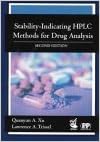Ensuring Integrity and Traceability of Stability Study Samples
Managing the integrity and traceability of stability study samples is paramount to ensure the accuracy, reliability, and compliance of your pharmaceutical product’s stability data. In this discussion, I’ll elaborate on key practices and measures to maintain sample integrity and traceability throughout the stability study process.
Sample Collection and Labeling
1. Clear Identification: Properly label each sample with unique identifiers, including batch number, strength, sampling date, and storage conditions.
2. Tamper-Proof Seals: Use tamper-evident seals on containers to prevent unauthorized access or alteration.
3. Proper Documentation: Maintain accurate records of the sampling process, including who collected the sample
Storage and Retrieval
1. Organized Storage: Allocate designated space for each batch and strength to avoid mix-ups.
2. Temperature Monitoring: Employ data loggers to ensure samples are stored under the specified conditions and to monitor any temperature excursions.
3. Controlled Access:
Limit access to authorized personnel to prevent accidental or deliberate tampering.Sample Handling and Testing
1. Chain of Custody: Maintain a clear chain of custody record, documenting every instance of sample transfer.
2. Proper Handling: Ensure samples are handled carefully to prevent contamination, degradation, or damage.
3. Duplicate Testing: Retain duplicate samples to allow for re-testing or verification, if necessary.
Documentation and Records
1. Comprehensive Records: Maintain detailed documentation for each sample, including collection, testing, and any deviations.
2. Data Integrity: Implement measures to prevent unauthorized access or modifications to data records.
3. Archiving: Establish a system for long-term sample retention, even after the study concludes.
Technology and Automation
1. Laboratory Information Management Systems (LIMS): Utilize LIMS to automate data entry, sample tracking, and result reporting.
2. Barcode or RFID: Implement barcode or RFID technology to enhance sample identification and tracking.
3. Digital Signatures: Use digital signatures to authenticate data entries and maintain accountability.
Deviation Handling
1. Immediate Reporting: Any deviation from established protocols should be reported promptly to initiate corrective actions.
2. Investigation: Conduct thorough investigations to determine the cause of deviations and implement corrective/preventive actions.
3. Documentation: Document all steps taken to address deviations and ensure traceability of corrective measures.
Audit and Review
1. Regular Audits: Conduct internal audits to assess compliance with procedures and identify areas for improvement.
2. Data Review: Regularly review stability data and documentation to identify trends or anomalies.
3. Continuous Training: Provide training to personnel to reinforce the importance of maintaining sample integrity and traceability.
Conclusion
Ensuring the integrity and traceability of stability study samples is foundational to producing accurate and reliable stability data. By implementing meticulous procedures, leveraging technology, and fostering a culture of compliance, pharmaceutical manufacturers can confidently assess product stability, make informed decisions, and meet regulatory requirements.
